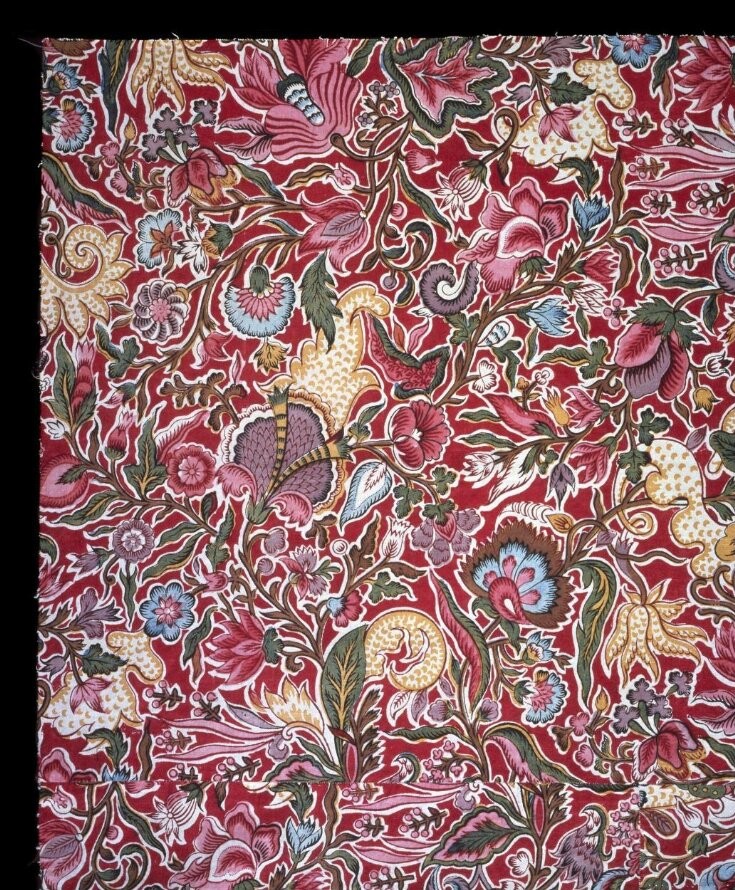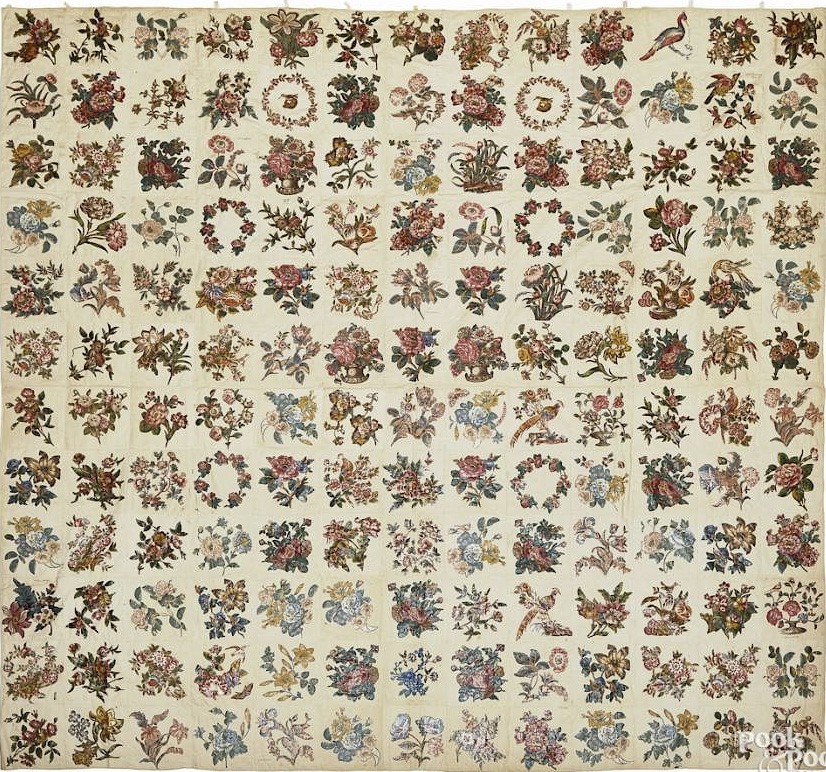
Just a reminder that because of the chinoiserie medallion in a recent acquisition quilt, we are continuing to research early textile printers in England. Because the medallions, panels, and borders printed were considered furnishing prints, not a basic calico, we’ve been exploring early furnishing printers from the late 1700s and beyond. Bannister Hall and Bromley Hall are the most frequently cited textiles printers from the period, however both printers went through multiple different owners and did commission printing for furniture manufacturers. (To learn more about Bannister Hall and Bromley Hall, click on their names to read a previous blog post.) Besides William Kilburn, a leading textile designer discussed in our last blog, Richard Ovey of Covent Garden was the leading London merchant for furniture prints from 1790 to 1831. Textiles at the Victoria and Albert Museum...





